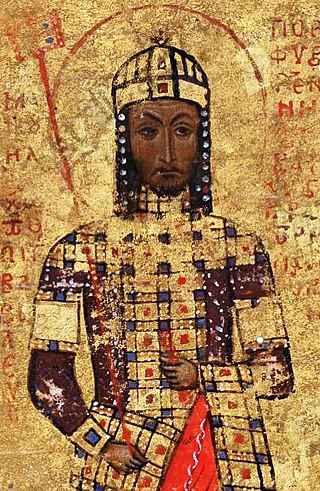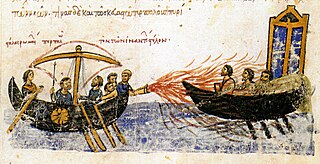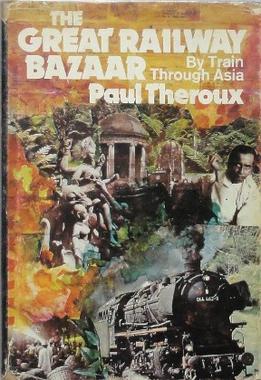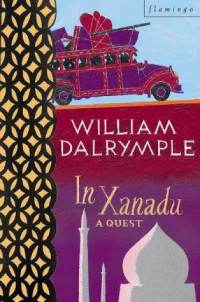
The Levant is an approximate historical geographical term referring to a large area in the Eastern Mediterranean region of Western Asia. In its narrowest sense, which is in use today in archaeology and other cultural contexts, it is equivalent to a stretch of land bordering the Mediterranean in southwestern Asia, i.e. the historical region of Syria, which includes present-day Israel, Jordan, Lebanon, Palestine, Syria and most of Turkey southwest of the middle Euphrates. Its overwhelming characteristic is that it represents the land bridge between Africa and Eurasia. In its widest historical sense, the Levant included all of the Eastern Mediterranean with its islands; that is, it included all of the countries along the Eastern Mediterranean shores, extending from Greece to Cyrenaica in eastern Libya.

Manuel I Komnenos, Latinized Comnenus, also called Porphyrogennetos, was a Byzantine emperor of the 12th century who reigned over a crucial turning point in the history of Byzantium and the Mediterranean. His reign saw the last flowering of the Komnenian restoration, during which the Byzantine Empire had seen a resurgence of its military and economic power and had enjoyed a cultural revival.

A pilgrim is a traveler who is on a journey to a holy place. Typically, this is a physical journey to some place of special significance to the adherent of a particular religious belief system. In the spiritual literature of Christianity, the concept of pilgrim and pilgrimage may refer to the experience of life in the world or to the inner path of the spiritual aspirant from a state of wretchedness to a state of beatitude.

The Middle East, also known as the Near East, is home to one of the Cradles of Civilization and has seen many of the world's oldest cultures and civilizations. The region's history started from the earliest human settlements and continues through several major pre- and post-Islamic Empires to today's nation-states of the Middle East.

Tur Abdin is a hilly region situated in southeast Turkey, including the eastern half of the Mardin Province, and Şırnak Province west of the Tigris, on the border with Syria and famed since Late Antiquity for its Christian monasteries on the border of the Roman Empire and the Sasanian Empire. The area is a low plateau in the Anti-Taurus Mountains stretching from Mardin in the west to the Tigris in the east and delimited by the Mesopotamian plains to the south. The Tur Abdin is populated by more than 80 villages and nearly 70 monastery buildings and was mostly Syriac Orthodox until the early 20th century. The earliest surviving Christian buildings date from the 6th century.

William Dalrymple is a Delhi-based Scottish historian and art historian, as well as a curator, photographer, broadcaster and critic. He is also one of the co-founders and co-directors of the world's largest writers festival, the annual Jaipur Literature Festival.

Benjamin of Tudela was a medieval Jewish traveler who visited Europe, Asia, and Africa in the twelfth century. His vivid descriptions of western Asia preceded those of Marco Polo by a hundred years. With his broad education and vast knowledge of languages, Benjamin of Tudela is a major figure in medieval geography and Jewish history.

Sophronius, called Sophronius the Sophist, was the Patriarch of Jerusalem from 634 until his death. He is venerated as a saint in the Eastern Orthodox and Catholic Churches. Before rising to the primacy of the see of Jerusalem, he was a monk and theologian who was the chief protagonist for orthodox teaching in the doctrinal controversy on the essential nature of Jesus and his volitional acts.

Ted Conover is an American author and journalist who has been called a "master of immersion" and "master of experience-based narrative nonfiction." A graduate of Amherst College and a former Marshall Scholar, he is also a professor and past director of the Arthur L. Carter Journalism Institute of New York University. He teaches graduate courses in the New York University Literary Reportage concentration, as well as undergraduate courses on the "journalism of empathy" and undercover reporting.

Saidnaya is a city located in the mountains, 1,500 m (4,900 ft) above sea level, 27 km (17 mi) north of the city of Damascus in Syria. It is the home of a Greek Orthodox monastery traditionally held to have been founded by Byzantine emperor Justinian I, and where a renowned icon of the Virgin Mary is revered by both Christians and Muslims to this day. According to the Syria Central Bureau of Statistics (CBS), Saidnaya had a population of 25,194 in the 2004 census.

The Arab–Byzantine wars were a series of wars between a number of Muslim Arab dynasties and the Byzantine Empire from the 7th to the 11th century. Conflict started during the initial Muslim conquests, under the expansionist Rashidun and Umayyad caliphs, in the 7th century and continued by their successors until the mid-11th century.
The Crusades were a series of religious wars initiated, supported, and sometimes directed by the Latin Church in the medieval period. The best known of these military expeditions are those to the Holy Land in the period between 1095 and 1291 that were intended to conquer Jerusalem and its surrounding area from Muslim rule. Beginning with the First Crusade, which resulted in the conquest of Jerusalem in 1099, dozens of military campaigns were organised, providing a focal point of European history for centuries. Crusading declined rapidly after the 15th century.
John Moschus, was a Byzantine monk and ascetical writer.

The Great Railway Bazaar: By Train Through Asia is a travelogue by American novelist Paul Theroux, first published in 1975. It recounts Theroux's four-month journey by train in 1973 from London through Europe, the Middle East, the Indian subcontinent and Southeast Asia, and his return via the Trans-Siberian Railway. The first part of the route, to India, followed what was then known as the hippie trail. It is widely regarded as a classic in the genre of travel writing. It sold 1.5 million copies upon release.

In Xanadu: A Quest is a 1989 travel book by William Dalrymple.

Cornelis Hulsman is a Dutch sociologist who has lived for years in Egypt since 1994. He is currently the editor in chief of the Arab-West Report, which is a report that includes a weekly digest of various Egyptian press outlets. Hulsman is further an expert on Egyptian printed media, The Coptic Orthodox Holy Family's tradition, interfaith relations in Egyptian society, and inter-cultural understanding in the Arab world. Hulsman has been a correspondent for several Dutch media outlets in Egypt, and has been the Secretary-General of the Cairo Foreign Press Association since 2003.

The Varangians were Viking conquerors, traders and settlers, mostly from present-day Sweden. The Varangians settled in the territories of modern-day Belarus, Russia and Ukraine, and in the 9th century, they founded the medieval state of Kievan Rus'. They also formed the Byzantine Varangian Guard, which later also included Anglo-Saxons.

The Eastern Roman (Byzantine) imperial church headed by Constantinople continued to assert its universal authority. By the 13th century this assertion was becoming increasingly irrelevant as the Eastern Roman Empire shrank and the Ottoman Turks took over most of what was left of the Byzantine Empire. The other Eastern European churches in communion with Constantinople were not part of its empire and were increasingly acting independently, achieving autocephalous status and only nominally acknowledging Constantinople's standing in the Church hierarchy. In Western Europe the Holy Roman Empire fragmented making it less of an empire as well.

Salomon Schweigger was a German Lutheran theologian, minister, anthropologist and orientalist of the 16th century. He provided a valuable insight during his travels in the Balkans, Constantinople and the Middle East, and published a famous travel book of his exploits. He also published the first German language translation of the Qur'an.

Coptic Egypt: The Christians of the Nile is a 2000 illustrated monograph on Copts and Christian Egypt. Written by the Belgian historian of religion Christian Cannuyer, and published in pocket format by Éditions Gallimard as the 395th volume in their 'Découvertes' collection, in collaboration with the Institut du Monde Arabe.


















